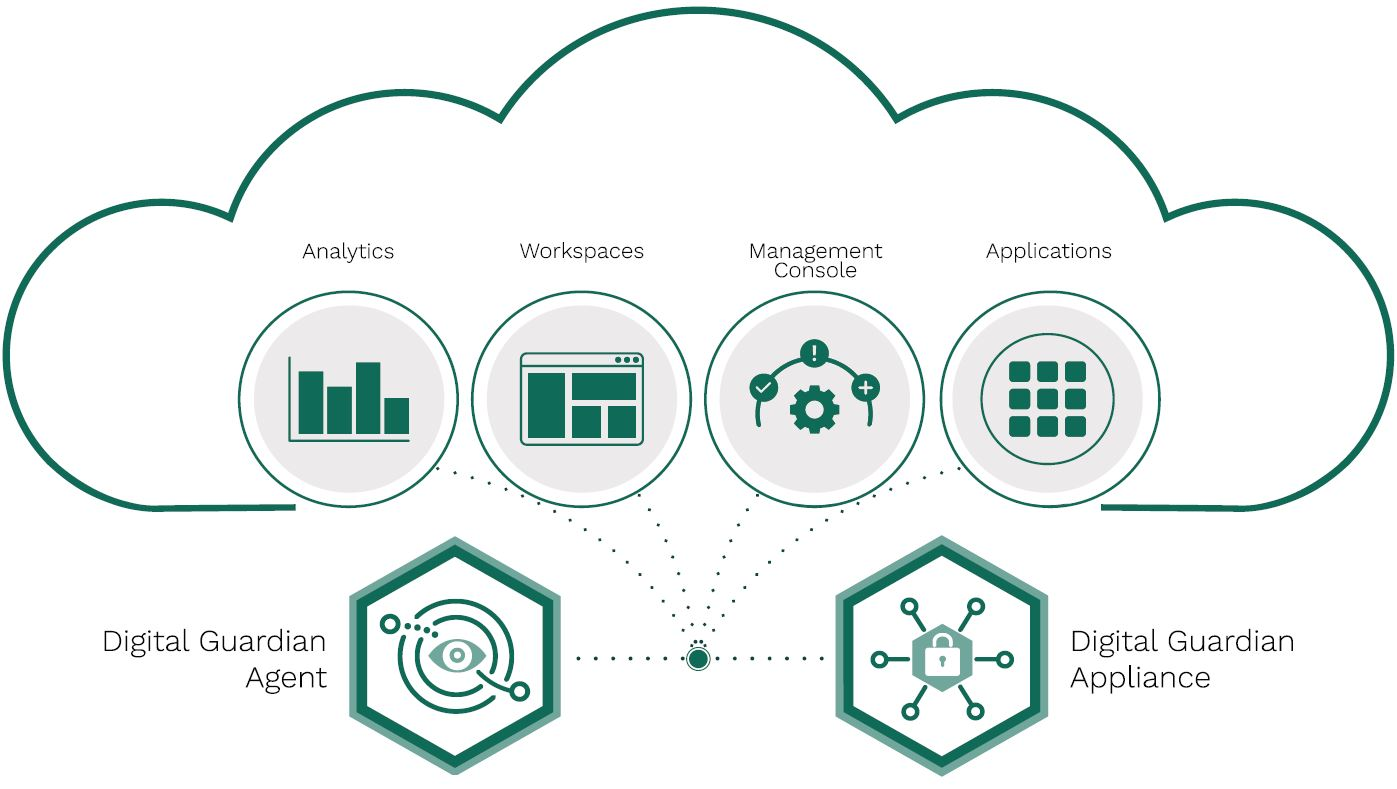Increase Data Protection | Reduce Overhead, Friction & Cost
Digital Guardian’s purpose-built SaaS infrastructure enables you and your team to focus more time, energy, and resources on identifying and mitigating risks to your sensitive data and less time on acquiring, building and maintaining the infrastructure.
The Digital Guardian Data Protection Platform is now available as a service that leverages a scalable cloud architecture which provides the ability to aggregate, analyze and query massive data sets from the network sensor and endpoint agent events in real-time. This new cloud architecture was built with the latest tools and methodologies to provide the scalability, data visualization and ease-of-use security analysts have come to expect from software as a service. The service delivers workspaces and workflows tailored for the unique needs of CISOs, InfoSec Analysts, Incident Responders and Threat Hunters.
Benefits of Digital Guardian SaaS
- Cut Costs and Maintenance Cycles. Digital Guardian hosts and manages a big data security architecture for you. You cut costs and the complexity of patching, updating and maintaining on premise hardware and software.
- Immediate Time to Value. No hardware, additional software or configuration required.
- Scalability. Our service takes advantage of the scalability of the cloud. We can scale up to meet your demand and provide sufficient storage and compute power to drive world class data protection at lower cost.
Cloud-Delivered Data Protection

What You Get
*Updates occur as a normal business practice, and scheduling of updates happens routinely.
**DG will not be responsible for configuration activities on the customer SIEM required for data processing. Refer to the Digital Guardian Website for a list of supported SIEMs.
SaaS Setup Services
DG has built three predefined SaaS Setup Services to enable the implementation of the DG SaaS environment. Setup Services are based on a variety of factors, but primarily are defined by the size (number of agents), scope of deployment (target systems, use cases, operating systems, etc.) and project deployment timelines.